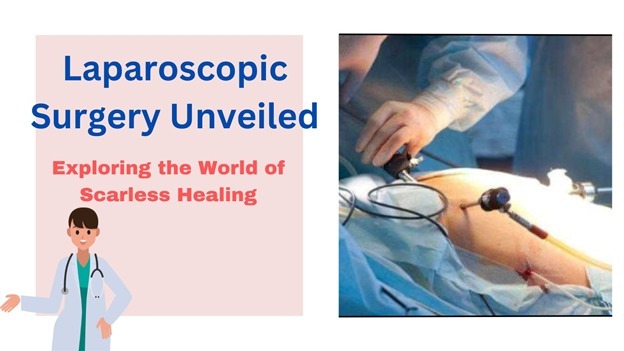





1 Jan 2024 / Blog
In recent years, laparoscopic surgery has gained significant traction in the field of modern medicine, revolutionizing traditional surgical approaches. As a minimally invasive technique, laparoscopy, also known as keyhole or scarless surgery , has transformed patient experiences and recovery times. Let's delve into the world of laparoscopic surgery and uncover everything you need to know.
At its core, laparoscopic surgery involves making small incisions through which a camera and specialized surgical instruments are inserted. This innovative approach allows surgeons to visualize the internal organs on a monitor, enabling precise and controlled maneuvers. Unlike traditional open surgery, laparoscopy minimizes trauma to surrounding tissues, resulting in reduced pain, shorter hospital stays, and quicker recovery.
One of the key benefits of laparoscopic surgery is the minimal scarring it leaves behind. Patients often appreciate the cosmetic advantages of tiny incisions, promoting better self-esteem and body image post-surgery.
Compared to traditional open surgery, laparoscopic procedures typically lead to faster recovery times. Patients can return to their daily activities sooner, contributing to an overall improved quality of life.
Smaller incisions mean less trauma to nerves and muscles, resulting in reduced postoperative pain. Patients often require fewer pain medications, minimizing the risk of associated side effects.
1. Cholecystectomy : Laparoscopic gallbladder removal has become a standard procedure for treating gallstones. The small incisions allow for a quicker recovery and reduced risk of complications compared to traditional open surgery.
2. Hernia Repair: Laparoscopic techniques are widely employed in repairing hernias, offering patients a less invasive alternative with minimal scarring and a faster return to normal activities.
3. Appendectomy : Removal of the appendix through laparoscopy is a common procedure that provides patients with a quicker recovery and decreased risk of infection.
While laparoscopic surgery offers numerous advantages, it is essential to address potential challenges. Surgeons require specialized training to master the technique, and not all patients are suitable candidates. Factors such as obesity or extensive scar tissue may limit the feasibility of laparoscopic approaches, necessitating a careful evaluation by the surgical team.
As technology continues to advance, the future of laparoscopic surgery looks promising. Robotic-assisted laparoscopy is on the horizon, offering even greater precision and control. Additionally, ongoing research focuses on expanding the range of procedures that can be performed laparoscopically, further enhancing the benefits for patients.
1. Reclaiming Life After Surgery : Personal accounts of individuals who have undergone laparoscopic procedures highlight the positive impact on their lives. Stories of swift recoveries, minimal scarring, and improved overall well-being inspire others facing similar medical challenges.
2. Embracing the Journey : Patients often share their emotional experiences, expressing gratitude for the skilled surgeons and the transformative power of laparoscopic surgery. These narratives serve as a source of hope and encouragement for those considering or scheduled for laparoscopic procedures.
it is impossible to exaggerate the revolutionary effects of laparoscopic surgery performed at Pune's Paarasmani Hospital . Patients and doctors alike are benefiting from a new age of transforming outcomes brought forth by this sophisticated medical technology. Laparoscopy is radically changing the field of surgical interventions with its capacity to reduce scarring and expedite recovery. Furthermore, as technology develops, this minimally invasive technique will likely have even more promising opportunities in the future, strengthening its status as a mainstay in the constantly changing world of surgical treatments. Whether you are a physician looking for new perspectives or a potential patient researching choices, diving into the field of laparoscopic surgery offers countless opportunities for flawless recovery and improved general health.